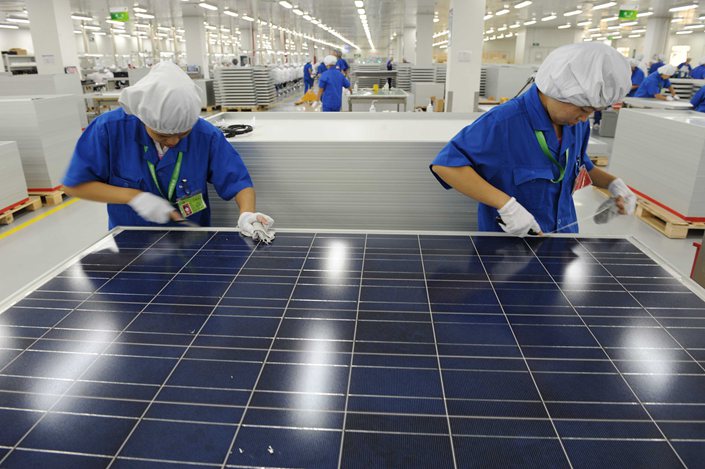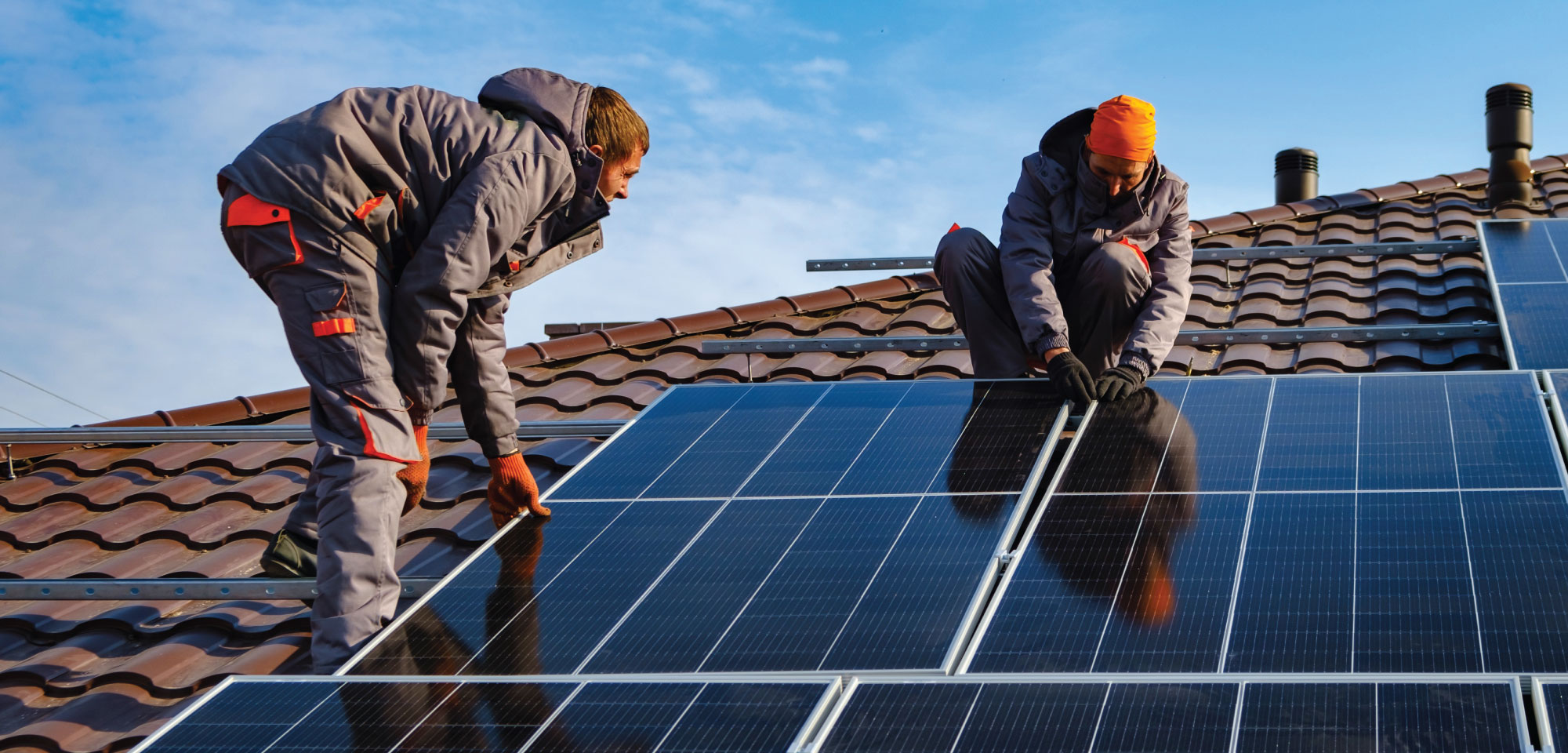6 Easy Facts About Solar Panel Company Virginia Explained
6 Easy Facts About Solar Panel Company Virginia Explained
Blog Article
Solar Panel Leasing Virginia: Lumina Solar Specializes In Offering Advanced Photovoltaic Solutions For Houses And Businesses
History and Founding
Have you ever questioned how a solar panel business springs from a mere spark of motivation into a powerhouse of renewable check here resource? It typically starts with a vision-- one fueled by a mix of development, decision, and a pinch of serendipity. The journey of numerous solar business mirrors the evolution of the technology itself: from large, inefficient panels to streamlined, high-efficiency marvels utilizing the sun's bounty.
The Early Days
In the late 20th century, when solar energy was still a niche concept, pioneers planted seeds for what would end up being a worldwide movement. Picture a small workshop filled with curious engineers, relentlessly try out solar batteries. Their passion was palpable, often driven by a desire to combat environment modification and lower reliance on nonrenewable fuel sources.
One such anecdote is about a founder who, influenced by a camping journey, realized that even in remote areas, the sun might power important devices. This easy observation sparked a company's mission to equalize access to clean energy.
Establishing Concepts

- Innovation: Constantly pushing the boundaries of solar technology to improve efficiency and sturdiness.
- Sustainability: Dedicating to environment-friendly production and reducing carbon footprints.
- Accessibility: Making renewable resource solutions cost effective and useful for daily users.
Milestones in Development
| Year | Key Occasion |
|---|---|
| 1985 | Company founded in a small garage, concentrating on research study and advancement. |
| 1995 | Commercial solar panel product released, gaining local attention. |
| 2005 | Expanded to global markets, embracing worldwide sustainable energy goals. |
| 2015 | Introduced cutting-edge solar panel innovation with boosted energy conversion. |
Isn't it interesting how these incremental steps, often overlooked, shape the energy landscape today? The photovoltaic panel business story is not just about technology; it's about a relentless mission for a brighter, cleaner future.

Developments in Solar Panel Technologies
Ever seen how some solar panels shine brighter and last longer? It's not magic; it's the science of photovoltaic efficiency. Modern solar panel business invest heavily in technologies like bifacial cells, which catch sunshine from both sides, increasing energy harvest without broadening roof area. Have you ever questioned why some panels carry out much better on cloudy days? That's due to advances in thin-film solar technology, which prospers under diffused light conditions.
Item Variations Tailored to Special Needs
One size never ever fits all. Solar panel suppliers now use:
- Monocrystalline panels for optimum performance and sleek aesthetic appeals, perfect for space-constrained rooftops.
- Polycrystalline panels, which offer an affordable option without compromising excessive output.
- Building-integrated photovoltaics (BIPV), merging solar tech seamlessly into architectural aspects like windows and exteriors.
Selecting the right item isn't almost in advance cost; it has to do with matching your environment, energy goals, and long-lasting cost savings. Homes shaded by trees require panels that stand out in low-light circumstances, something lots of neglect until energy costs climb unexpectedly.
Technical Tips for Optimum Choice
- Assess the temperature level coefficient-- lower values mean panels lose less efficiency on hot days.
- Look for panels with boosted anti-reflective coverings to optimize light absorption.
- Think about the panel's service warranty not just for problems, but for guaranteed power output over decades.
- Do not underestimate the value of the inverter technology matched with the panels; it can make or break your system's performance.
Beyond Panels: Emerging Trends
Imagine solar panels that change their angle immediately to chase the sun-- tracking systems are ending up being more accessible, increasing yield considerably. Or solar tiles that blend undetectably into your roofline, transforming your home into a quiet, self-sufficient power generator. These innovations are reshaping what a photovoltaic panel company uses-- not simply products, but integrated energy solutions.
Market Existence and Global Operations
Ever wonder why some solar panel business appear to sprout up in every corner of the globe while others hardly make a ripple? The difference lies not simply in innovation however in mastering the art of browsing varied markets. Broadening worldwide is like planting seeds in various environments-- you should comprehend each environment's special conditions to prosper.
Take, for example, the intricate dance of logistics and supply chain management. Shipping panels midway across the world isn't practically distance; it's about timing, custom-mades, tariffs, and adjusting to regional demand variations. A business with robust international operations expects these variables, guaranteeing panels arrive on schedule without pumping up costs. This foresight is no little accomplishment and typically separates market leaders from followers.
Key Methods for Expanding Market Presence
- Localized production: Establishing production centers near target audience minimizes shipping delays and import complexities.
- Strategic collaborations: Teaming up with regional companies speeds up market penetration and constructs trust.
- Adaptive item style: Customizing photovoltaic panel tech to weather, sun intensity, and infrastructure subtleties enhances performance and approval.
What about the human factor? Solar panel business operating internationally need to reconcile cultural distinctions and regulatory nuances without forgeting their core objective. What works in a sun-drenched desert might fail in a humid seaside area. Often, the most ingenious solution is simply listening-- taking in regional insights to fine-tune technology and technique.
Specialists typically advise a phased rollout rather than a shotgun growth. Why run the risk of overextension when determined development builds sustainable momentum? Scaling wisely suggests balancing ambition with operational strength - Solar Panel Company Virginia. In the race for sustainable energy dominance, perseverance can be as valuable as speed.
Ecological Impact and Sustainability Practices
When solar panels first emerged, many assumed they carried no environmental luggage. However, the reality is more nuanced. The production of photovoltaic cells involves uncommon earth metals and energy-intensive processes, which can leave a substantial carbon footprint before the panels even reach roofs. The real environmental cost depends heavily on the sustainability practices used by the photovoltaic panel business throughout the lifecycle of their products.
How typically do we pause to consider what takes place to solar panels at the end of their useful life? Unlike batteries or electronic devices, solar panels can last 25-30 years, but disposal and recycling pathways remain underdeveloped in many areas. A business devoted to lowering environmental harm will have a robust prepare for recycling photovoltaic materials, restoring important silicon, glass, and metals to avoid land fill build-up.
Key Sustainability Strategies
- Using low-impact production strategies that decrease water and energy consumption.
- Executing closed-loop systems to recycle production waste back into brand-new panels.
- Engaging in transparent supply chain audits to guarantee ethical sourcing of basic materials.
- Designing panels for much easier disassembly to help future recycling efforts.
It deserves keeping in mind that some solar companies have originated ingenious methods, such as incorporating eco-friendly parts or using less harmful chemicals during fabrication. This not just decreases ecological stress but also sets a precedent for the industry. The question stays: can the solar industry really pivot towards a circular economy design without compromising effectiveness or price?
Professional Tips for Examining Sustainability
- Inquire about the company's dedication to carbon-neutral manufacturing and whether they balance out emissions.
- Examine if they partner with accredited recycling facilities committed to photovoltaic panel waste.
- Try to find openness reports detailing ecological impacts and sustainability objectives.
- Think about the longevity and warranty of panels as an indirect measure of resource efficiency.
In the end, choosing solar power ought to suggest more than just slashing electrical power expenses; it's about nurturing a future where energy is gathered properly and waste is thoughtfully managed. Photovoltaic panel business that welcome this approach not only brighten homes but likewise cast a brighter light on sustainable development.
Report this page